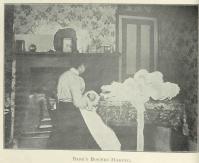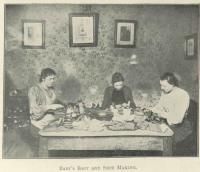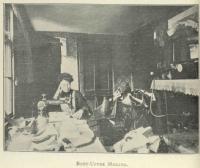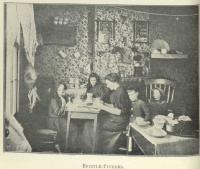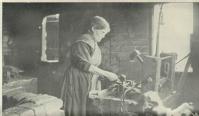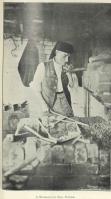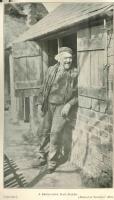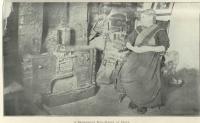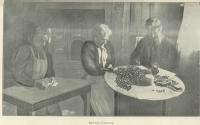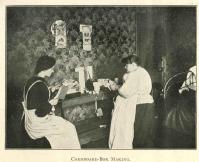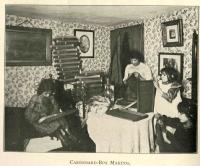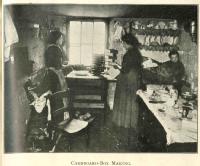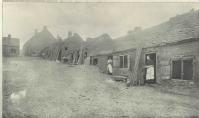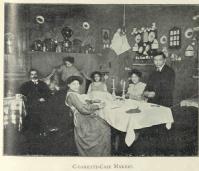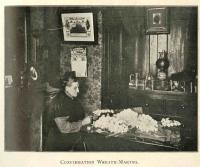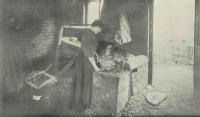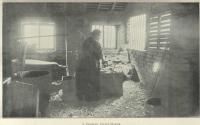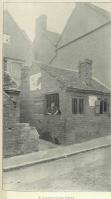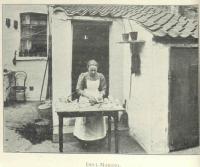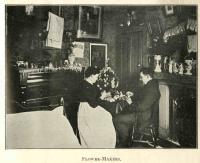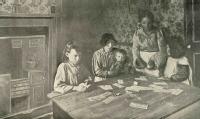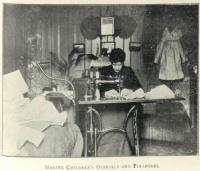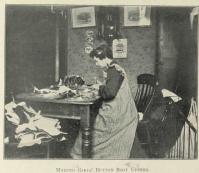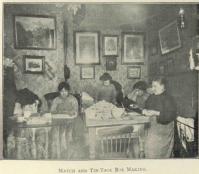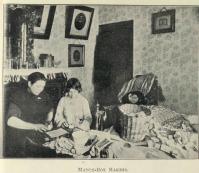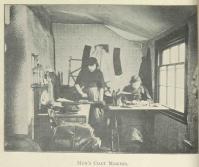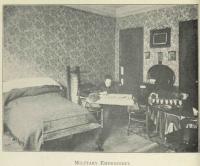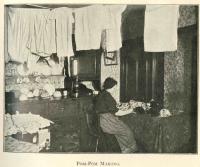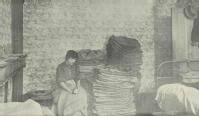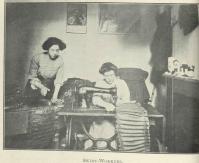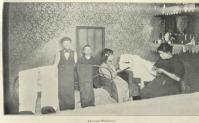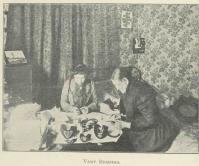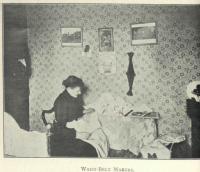The Sweated Industries exhibition, 1906
In 1906 the Daily News organised an exhibition to highlight "the evils of sweating". As well as objects produced by 'sweated' labour, the exhibition created a sensation by also putting on display the workers themselves. Almost daily lectures from prominent figures (including future leaders of the Labour Party George Lansbury and James Ramsay Macdonald, trade unionists Mary Macarthur and Amie Hicks, and the author George Bernard Shaw) and evening lantern slide shows contributed to the event's popularity. Nearly 30,000 people visited the exhibition during its six week run at Queen's Hall, London, and the first edition of the accompanying handbook (5,000 copies) sold out within 10 days.
The idea of using a public exhibition as part of a campaign against exploitative working conditions wasn't new - the Daily News had taken inspiration from similar events held in Berlin and Bethnal Green in 1904 - but the response to the 1906 exhibition was unprecedented. Although many of the members of the organising council had their roots in the labour movement, the exhibition set out to attract, and shock, a broader section of society - it was officially opened by Princess Beatrice, one of the daughters of Queen Victoria, and became a social event during the London season. The idea of minor royalty and the well-to-do viewing some of Britain's most exploited workers in a West End concert hall smacked of poverty tourism for some, but the exhibition helped to highlight the social costs of goods produced by 'sweated' labour to those with the purchasing power to buy the products and the political power to campaign for a change in legislation.
1906 also saw a landslide Liberal victory in the January general election, and the new Home Secretary, Herbert Gladstone, was one of the exhibition's many visitors. In response to public concern about 'sweated' industries, and the campaigning of the newly established National Anti-Sweating League, the government established a Select Committee on Home Work which heard evidence during 1907-8 and recommended the legal regulation of low wages. In 1909 the Trade Board Act was passed, introducing Britain's first minimum wage for workers in four of the most exploited industries.
The handbook of the Daily News exhibitionLink opens in a new window (second edition, May 1906) has been digitised as part of the 'Work in the sweated trades' project. It includes short articles which describe the work of different types of 'sweated' workers, brief notes on the 45 unnamed workers who took part in the exhibition, and information about the (non-human) exhibits. Additional information about the handbook's contents, with links to the relevant sections, is available elsewhere on our website. The handbook was illustrated with a series of photographs which show homeworkers at work - these have been reproduced below.

